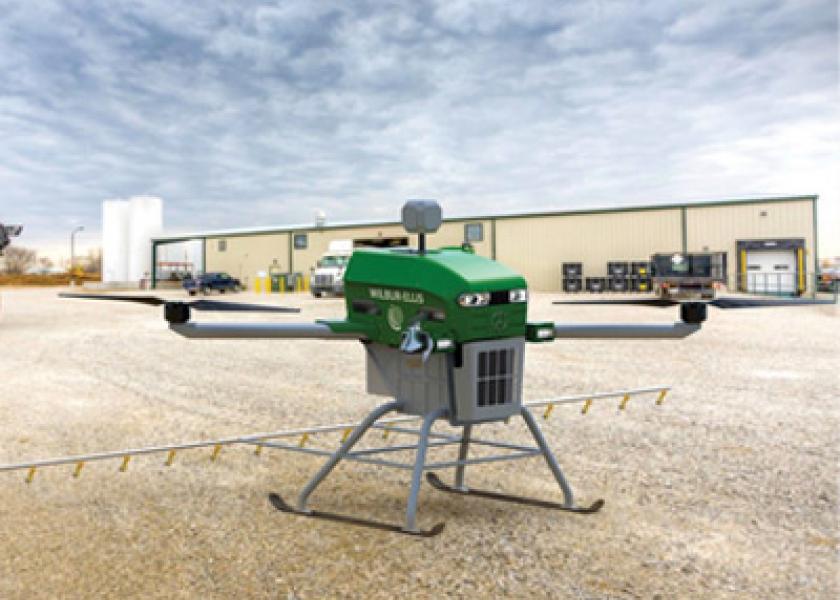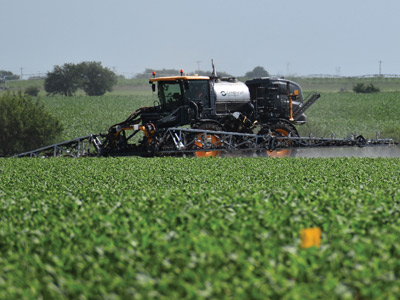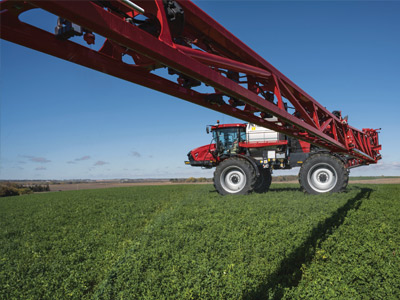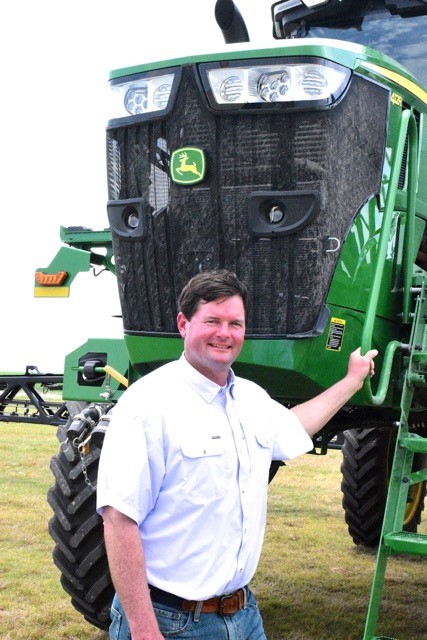Special Delivery: Trends in Spray Technology

Sprayers are being outfitted with new products and configured in new ways to make applications quicker, cheaper and more precise. Here are a few examples.
DRONES TAKE FLIGHT.
Wilbur-Ellis partnered with Guardian Agriculture for the first fully autonomous crop protection aircraft system. The 100% electric drone can carry hundreds of pounds and spray 40 acres per hour.
Henry Farmer’s Co-op uses drones to complement ground rigs. “We bought the Hagie to spray the big acres and then jump around with the drones and cover the little corners,” says Cody Ray of the co-op.
RETROFIT TO STAY UP TO DATE.
With the idea of “after-market first,” Greeneye Technology created a sprayer boom designed to retrofit any existing sprayer machine. Much like a skid-steer attachment, the entire existing factory boom is replaced with the fully equipped Greeneye boom. The one-tank system on the average sprayer is changed out with a two-tank system.

THE BIG DEAL ABOUT BOOMS.
Wider working widths have not only brought expanded horizons to the spray pass but also heavier booms. That’s started to change with new engineering using carbon fiber and aluminum. In May, CNH Industrial announced its acquisition of Specialty Enterprises, the provider of Case IH’s and New Holland’s aluminum spray booms since 2020.

Seek, Spray, Save: Texas Grower Cuts Herbicide Applications by Up Uo 80%
Like most growers, Sam Sparks has dealt with high input costs and herbicide shortages. That’s why he’s not afraid to trust artificial intel-ligence (AI) to cut herbicide use and improve weed management on his Mercedes, Texas, farm.
In trials on his 2021 cotton crop, Sparks was able to decrease herbicide treatments by up to 80% using John Deere’s See & Spray Ul-timate AI technology. He saw similar results this summer and enjoyed huge savings in herbicide costs and better control. He also feels there is a reduced chance for weed resistance, less labor needs and an opportunity to improve soil health.
ONE PASS, TWO APPLICATIONS

The See & Spray unit is mounted on a John Deere 600 series sprayer. The booms are equipped with 36 cameras equally spaced across the 120' span. Using technology developed by Blue River Technology, the cameras can identify weeds and immediately spray them, without spraying the entire field.
The system features two independent tanks with up to 1,200 gal. of capacity. One works off the See & Spray system to target weeds. The other is a broadcast system that can apply a separate chemical or tank mix.
“One pass can do the work of two passes,” Sparks says. “We can apply herbicide to targeted weeds through one tank and fungicide for diseases through the broadcast tank.”
Farmers in Spark’s region’s typically face herbicide costs of $11.25 per acre for Roundup Powermax and $12.30 per acre for Engenia to $25 per acre for Liberty, says Justin Chopelas, an independent crop consultant for the Texas Coastal Bend and Rio Grande Valley. If a program such as See & Spray can cut herbicide applications by 50% to 75% or more, that’s a savings of nearly $25 to $35 per acre.
CAMERAS DETECT SPECIFIC WEEDS
Sparks’ weed problems center on sunflowers, ragweed, Texas panicum grass, nutgrass and pigweed. His cotton herbicide program involves pre-emerge application of 3 pints of Warrant per acre, followed by postemerge Liberty applications at 24 oz. to 32 oz. per acre to control escapes, grasses or broadleaves.
“In the past we used a John Deere self-propelled sprayer making predominately broadcast applications,” Sparks says. “In some cas-es, we attempted to spot spray by turning the boom sections on and off across the field where weed pressure is heavy.
“See & Spray has helped save a substantial amount on herbicide. We have seen as high as 80% savings on herbicide usage because the system’s camera program instantly sprays only where it detects weeds,” he adds.
Sparks says the new technology again proved its worth in late May 2022 following several inches of rain.
“After pre-emerge herbicide treatments, we had pigweed come through cotton as it emerged,” he says. “It made it through the first bloom stage on about 5% of the field. That’s where we saw the benefit of See & Spray; it targeted those few plants in the 80-acre plot and only sprayed them.”
HOW IT WORKS
The technology goes beyond individual nozzle control, says Franklin Peitz, John Deere marketing manager: “See & Spray provides plant-level control with AI.”
See & Spray applications can be made during daylight at speeds of 9 mph to 12 mph. When switching to the broadcast tank, speeds can increase to 25 mph. Peitz says the BoomTrac Ultimate control keeps the tip of the boom within 10" of the target height 95% of the time to improve accuracy.
The AI technology uses cameras to capture plant images. Camera processors then determine if a plant is a weed or a crop, then sends a signal to the nozzle to spray. All that happens in 0.2 seconds, Peitz says.
John Deere intends to have See & Spray Ultimate commercially available this year.







